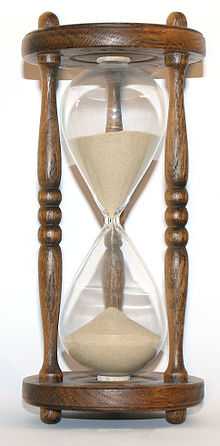Sidereal year
A sidereal year (from Latin sidus "asterism, star") is the time taken by the Earth to orbit the Sun once with respect to the fixed stars. Hence it is also the time taken for the Sun to return to the same position with respect to the fixed stars after apparently travelling once around the ecliptic.
It equals 365.25636 SI days for the J2000.0 epoch.[1]
The sidereal year differs from the tropical year, the time interval between vernal equinoxes in successive years, due to the precession of the equinoxes.
The sidereal year is 20 min 24.5 s longer than the mean tropical year at J2000.0 (365.242189 days),[1] and is 19 min 57.8 s longer than the average year of the Gregorian calendar (it is the tropical year that is approximated by the average Gregorian year of 365.2425 days).
Before the discovery of the precession of the equinoxes by Hipparchus in the Hellenistic period, the difference between sidereal and tropical year was unknown. For naked-eye observation, the shift of the constellations relative to the equinoxes only becomes apparent over centuries or "ages", and pre-modern calendars such as Hesiod's Works and Days would give the times of the year for sowing, harvest, and so by reference to the first visibility of stars, effectively using the sidereal year.
See also
References
- ↑ 1.0 1.1 IERS EOP PC Useful constants.
An SI day or mean solar day equals 86400 SI seconds.
From the mean longitude referred to the mean ecliptic and the equinox J2000 given in Simon, J. L., et al., "Numerical Expressions for Precession Formulae and Mean Elements for the Moon and the Planets" Astronomy and Astrophysics 282 (1994), 663–683.
